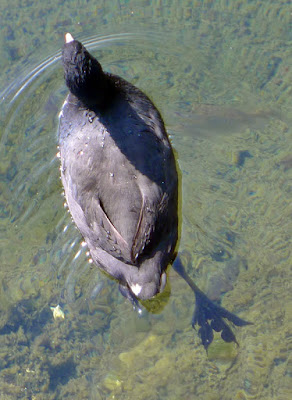We’re our own worst critics. A little time and you might realize that painting has flashes of brilliance.
 |
| Adirondack Spring, 11×14 in a cherry frame, will be available through a fundraiser for the Gerhardt Neighborhood Outreach Center on October 17. This is a mission that provides medical care, job training, after school care and more to the residents of North Rochester, and one I’m delighted to support. If you’re interested in my work and in supporting a great city mission, contact Annie Canon. |
As I set down my brush after a long painting session, I have one of two reactions. It’s either, “meh,” or “that’s pretty bad.” All I can see at that moment are the ways in which the painting has fallen short of my inner vision. I don’t see the things that are going right, like audacious composition, new ideas, or bravura brushwork.
I’ve been at this long enough to ignore that reaction. I no longer question whether the work is good or bad. I just ask myself if it’s finished.
Yesterday, Ken DeWaardspoke to the Knox County Art Society (KCAS). He said that he takes plein airwork back to his studio and leans it face-in against the wall for a few days. Only after the struggle has faded from memory does he turn it back around. Then he can dispassionately analyze what it needs.
 |
| Fog Bank, by Carol L. Douglas. |
The worst self-doubt happens when you’re in a plein airevent and your work is overlooked by buyers and judges. It’s very easy to think you’re painting terribly. This happened to me this year with Fog Bank. I was unimpressed with it, since it’s largely atmosphere and no composition. Three months later, I like the painting more than anything else I did at that event. My goal was to show the movement of a North Atlantic fog, and I think it worked. That nobody else was thrilled by it is immaterial.
I had a similar reaction to another painting in 2017, They wrest their living from the sea. At the time, I thought the whole thing was too fussy and overworked. But set against my intention, the painting is a success. I wanted to contrast the tiny houses of Advocate Harbour with the vast landscape in which its people fish and farm. There are times when skies arefussy and detailed. Sometimes we have to square up to that and paint them realistically, instead of stylizing.
| They wrest their living from the sea, by Carol L. Douglas |
My old friend Marilyn often wiped out paintings she didn’t like. “Another board saved!” she would say. I don’t do that. Even failed paintings tell me something about my process.
Sometimes a painting is uncomfortable to look at because it’s pointing the way forward. It can seem like an awkward outlier when you do it. Five years later, you realize it was a bellwether and the best thing you painted that year. You’ll blunt your development if you wipe out everything that makes you uncomfortable.
In students, this discomfort with change can result in paralysis. They fuss and get nothing done in class. If that’s you, try falling back on strict exercises that force you to stop thinking in terms of results and start thinking in terms of process. (I’ll get into these on Friday.)
 |
| Grand Bahama Palms, by Carol L. Douglas |
The last painting in this post is one I did on Grand Bahama in 2017. There is never any guarantee that a moment of beauty will be there when you return. This young palm is in one of the hardest-hit parts of the island, and I imagine it was drowned and broken. If the painting survived, I hope it reminds the owners of the former glory of their patch of land, and is a promise that beauty will return soon.





